 W
WThe Spanish West Indies or the Spanish Antilles were Spanish colonies in the Caribbean. In terms of governance of the Spanish Empire, The Indies was the designation for all its overseas territories and was overseen by the Council of the Indies, founded in 1524 and based in Spain. When the crown established the Viceroyalty of New Spain in 1535, the islands of the Caribbean came under its jurisdiction.
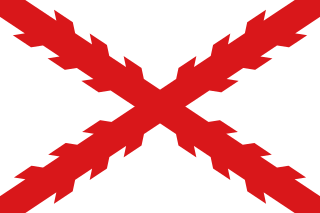 W
WThe Viceroyalty of New Spain was an integral territorial entity of the Spanish Empire, established by Habsburg Spain during the Spanish colonization of the Americas. It covered a huge area that included much of North America, northern parts of South America and several Pacific Ocean archipelagos, namely Philippines and Guam. It originated in 1521 after the fall of Tenochtitlan, the main event of the Spanish conquest, and officially created on 18 August 1521 as a kingdom, the first of four viceroyalties Spain created in the Americas. Its first viceroy was Antonio de Mendoza y Pacheco, and the capital of the kingdom was Mexico City, established on the ancient Tenochtitlan.
 W
WThe Viceroyalty of New Spain was an integral territorial entity of the Spanish Empire, established by Habsburg Spain during the Spanish colonization of the Americas. It covered a huge area that included much of North America, northern parts of South America and several Pacific Ocean archipelagos, namely Philippines and Guam. It originated in 1521 after the fall of Tenochtitlan, the main event of the Spanish conquest, and officially created on 18 August 1521 as a kingdom, the first of four viceroyalties Spain created in the Americas. Its first viceroy was Antonio de Mendoza y Pacheco, and the capital of the kingdom was Mexico City, established on the ancient Tenochtitlan.
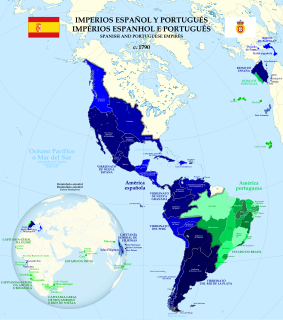 W
WThe Spanish colonization of the Americas began under the Crown of Castile and spearheaded by the Spanish conquistadors. The Americas were invaded and incorporated into the Spanish Empire, with the exception of Brazil, British America, and some small regions in South America and the Caribbean. The crown created civil and religious structures to administer this vast territory. The main motivations for colonial expansion were profit and the spread of Catholicism through indigenous conversions.
 W
WThe Confederación Antillana or Antillean Confederation was the vehement idea of Ramón Emeterio Betances about the need for natives of the Spanish Caribbean to unite into a regional entity that would seek to preserve the sovereignty and well-being of Cuba, the Dominican Republic and Puerto Rico.
 W
WGiovanni Battista Antonelli was a military engineer born in Italy and died in Toledo Spain in 1588. His most important works was a series of watchtowers along the coast of Mediterranean Sea in Spain. His brother Battista Antonelli was also a military engineer.
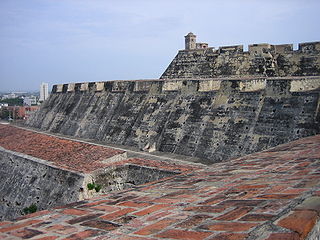 W
WBattista Antonelli (1547–1616) was a military engineer from a prestigious Italian family of military engineers in the service of the Habsburg monarchs of Austria and Spain.
 W
WThe Arawak are a group of indigenous peoples of South America and of the Caribbean. Specifically, the term "Arawak" has been applied at various times to the Lokono of South America and the Taíno, who historically lived in the Greater Antilles and northern Lesser Antilles in the Caribbean. All these groups spoke related Arawakan languages.
 W
WThe Battle of Santo Domingo (1586) or the Capture of Santo Domingo was a military and naval action fought on 1 January 1586, of the recently declared Anglo-Spanish War that resulted in the assault and capture by English soldiers and sailors of the Spanish city of Santo Domingo governed by Cristóbal de Ovalle on the Spanish island of Hispaniola. The English were led by Francis Drake and was part of his Great Expedition to raid the Spanish New World in a kind of preemptive strike. The English soldiers then occupied the city for over a month and captured much booty along with a 25,000 ducat ransom before departing on 1 February.
 W
WThe Battle of St. Kitts or St. Cristopher was a successful Spanish expedition that seized the islands of Saint Kitts and Nevis from the English and French during the Anglo-Spanish War (1625–30).
 W
WFrancisco Cajigal de la Vega was a Spanish military officer, governor of Cuba from 1747 to 1760, and interim viceroy of New Spain, from April 28, 1760 to October 5, 1760, succeeded by Viceroy Joaquín de Montserrat, marqués de Cruillas.
 W
WThe Captaincy General of Puerto Rico was an administrative district of the Spanish Empire, created in 1580 to provide better military management of the island of Puerto Rico, previously under the direct rule of a lone governor and the jurisdiction of Audiencia of Santo Domingo. Its creation was part of the, ultimately futile, Habsburg attempt in the late 16th century to prevent incursion into the Caribbean by foreign powers. Spain also established Captaincies General in Cuba, Guatemala and Yucatán.
 W
WSanto Domingo, officially the Captaincy General of Santo Domingo was the first colony established in the New World under Spain in 1492. The island was named "La Española" (Hispaniola) by Christopher Columbus. In 1511, the courts of the colony were placed under the jurisdiction of the Real Audiencia of Santo Domingo.
 W
WCaribbean Spanish is the general name of the Spanish dialects spoken in the Caribbean region. It resembles the Spanish spoken in the Canary Islands and more distantly the one spoken in western Andalusia.
 W
WSantiago was a Spanish territory of the Spanish West Indies and within the Viceroyalty of New Spain, in the Caribbean region. Its location is the present-day island and nation of Jamaica.
 W
WSanto Domingo, officially the Captaincy General of Santo Domingo was the first colony established in the New World under Spain in 1492. The island was named "La Española" (Hispaniola) by Christopher Columbus. In 1511, the courts of the colony were placed under the jurisdiction of the Real Audiencia of Santo Domingo.
 W
WThe Columbian Viceroyalty, Viceroyalty of India or First Viceroyalty in the Indies is the name that designates the number of titles and rights granted to Christopher Columbus by the Catholic Monarchs in 1492 on the lands discovered and undiscovered, before embarking on his first trip that culminated in the discovery of the Americas.
 W
WBartholomew Columbus was an Italian explorer from Genoa and the younger brother of Christopher Columbus.
 W
WDiego Columbus was a navigator and explorer under the Kings of Castile and Aragón. He served as the 2nd Admiral of the Indies, 2nd Viceroy of the Indies and 4th Governor of the Indies as a vassal to the Kings of Castile and Aragón. He was the elder son of Christopher Columbus and his wife Filipa Moniz Perestrelo.
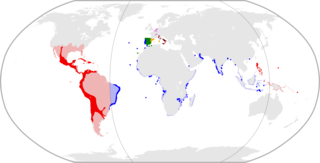 W
WThe Council of the Indies; officially, the Royal and Supreme Council of the Indies, was the most important administrative organ of the Spanish Empire for the Americas and the Philippines. The crown held absolute power over the Indies and the Council of the Indies was the administrative and advisory body for those overseas realms. It was established in 1524 by Charles V to administer "the Indies," Spain's name for its territories. Such an administrative entity, on the conciliar model of the Council of Castile, was created following the Spanish conquest of the Aztec empire in 1521, which demonstrated the importance of the Americas. Originally an itinerary council that followed Charles V, it was subsequently established as an autonomous body with legislative, executive and judicial functions by Philip II of Spain and placed in Madrid in 1561. The Council of the Indies was abolished in 1812 by the Cortes of Cádiz, briefly restored in 1814 by Ferdinand VII of Spain, and definitively abolished in 1834 by the regency, acting on behalf of the four-year-old Isabella II of Spain.
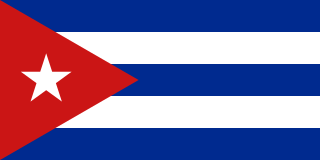 W
WCuba, officially the Republic of Cuba is a country comprising the island of Cuba, as well as Isla de la Juventud and several minor archipelagos. Cuba is located in the northern Caribbean where the Caribbean Sea, Gulf of Mexico and Atlantic Ocean meet. It is east of the Yucatán Peninsula (Mexico), south of both the U.S. state of Florida and the Bahamas, west of Haiti and north of both Jamaica and the Cayman Islands. Havana is the largest city and capital; other major cities include Santiago de Cuba and Camagüey. The official area of the Republic of Cuba is 109,884 square kilometers (42,426 sq mi). The main island of Cuba is the largest island in Cuba and in the Caribbean, with an area of 104,338 square kilometers (40,285 sq mi). Cuba is the second-most populous country in the Caribbean after Haiti, with over 11 million inhabitants.
 W
WThe Captaincy General of Cuba was an administrative district of the Spanish Empire created in 1607 as part of Habsburg Spain's attempt to better defend and administer its Caribbean possessions. It also involved creating captaincies general in Puerto Rico, Guatemala and Yucatán. The restructuring of the Captaincy General in 1764 was the first example of the Bourbon Reforms in America. The changes included adding the provinces of Florida and Louisiana and granting more autonomy to these provinces. This later change was carried out by the Count of Floridablanca under Charles III to strengthen the Spanish position vis-a-vis the British in the Caribbean. A new governor-captain general based in Havana oversaw the administration of the new district. The local governors of the larger Captaincy General had previously been overseen in political and military matters by the president of the Audiencia of Santo Domingo. This audiencia retained oversight of judicial affairs until the establishment of new audiencias in Puerto Príncipe (1800) and Havana (1838). In 1825, as a result of the loss of the mainland possessions, the Spanish government granted the governors-captain generals of Cuba extraordinary powers in matters of administration, justice and the treasury and in the second half of the 19th century gave them the title of Governor General.
 W
WThe Dominican Republic is a country located on the island of Hispaniola in the Greater Antilles archipelago of the Caribbean region. It occupies the eastern five-eighths of the island, which it shares with Haiti, making Hispaniola one of only two Caribbean islands, along with Saint Martin, that are shared by two sovereign states. The Dominican Republic is the second-largest nation in the Antilles by area at 48,671 square kilometers (18,792 sq mi), and third-largest by population with approximately 10.8 million people, of whom approximately 3.3 million live in the metropolitan area of Santo Domingo, the capital city. The official language of the country is Spanish.
 W
WThe encomienda was a Spanish labor system that rewarded conquerors with the labor of particular groups of conquered non-Christian people. The laborers, in theory, were provided with benefits by the conquerors for whom they labored, the Catholic religion being a principal benefit. The encomienda was first established in Spain following the Christian conquest of Moorish territories, and it was applied on a much larger scale during the Spanish colonization of the Americas and the Spanish Philippines. Conquered peoples were considered vassals of the Spanish monarch. The Crown awarded an encomienda as a grant to a particular individual. In the conquest era of the sixteenth century, the grants were considered to be a monopoly on the labor of particular groups of indigenous peoples, held in perpetuity by the grant holder, called the encomendero, and his or her descendants.
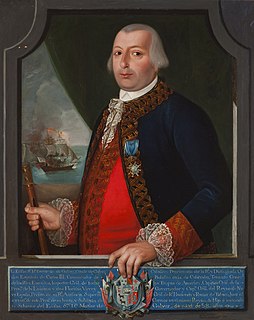 W
WBernardo Vicente de Gálvez y Madrid, 1st Viscount of Galveston, 1st Count of Gálvez was a Spanish officer and colonial administrator who served as the colonial governor of Spanish Louisiana and Cuba, and later as Viceroy of New Spain. Gálvez gained his first military experience fighting Apache tribes in New Mexico.
 W
WJuan de Grijalva was a Spanish conquistador, and a relative of Diego Velázquez. He went to Hispaniola in 1508 and to Cuba in 1511. He was one of the early explorers of the Mexican coastline.
 W
WHispaniola is an island in the Caribbean archipelago known as the Greater Antilles. It is the most populous island in the West Indies and the region's second largest after Cuba.
 W
WThe history of Puerto Rico began with the settlement of the archipelago of Puerto Rico by the Ortoiroid people between 3,000 and 2,000 BC. Other tribes, such as the Saladoid and Arawak Native Puerto Ricans, populated the island between 430 BC and 1000 AD. At the time of Christopher Columbus's arrival in the New World in 1493, the dominant indigenous culture was that of the Taínos. The Taíno people's numbers went dangerously low during the later half of the 16th century because of new infectious diseases carried by Europeans, exploitation by Spanish settlers, and warfare.
 W
WLa Isabela in Puerto Plata Province, Dominican Republic was the first Spanish town in the Americas. The site is 42 km west of the city of Puerto Plata, adjacent to the village of El Castillo. The area now forms a National Historic Park.
 W
WThe Laws of the Indies are the entire body of laws issued by the Spanish Crown for the American and the Philippine possessions of its empire. They regulated social, political, religious, and economic life in these areas. The laws are composed of myriad decrees issued over the centuries and the important laws of the 16th century, which attempted to regulate the interactions between the settlers and natives, such as the Laws of Burgos (1512) and the New Laws (1542).Throughout the 400 years of Spanish presence in these parts of the world, the laws were compiled several times, most notably in 1680 under Charles II in the Recopilación de las Leyes de los Reins de las Indias. This became considered the classic collection of the laws, although later laws superseded parts of it, and other compilations were issued.
 W
WPedro Menéndez de Avilés was a Spanish admiral and explorer from the region of Asturias, Spain, who is remembered for planning the first regular trans-oceanic convoys and for founding St. Augustine, Florida, in 1565. This was the first successful Spanish settlement in La Florida and the most significant city in the region for nearly three centuries. St. Augustine is the oldest continuously-inhabited, European-established settlement in the continental United States. Menéndez de Avilés was also the first governor of Florida (1565–74).
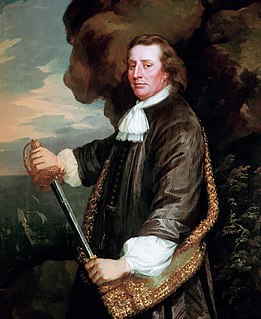 W
WVice Admiral Sir Christopher Myngs was an English naval officer and privateer. He came of a Norfolk family and was a relative of Admiral Sir Cloudesley Shovell. Samuel Pepys' story of Myngs' humble birth, in explanation of his popularity, is likely to be erroneous.
 W
WThe Narváez expedition was a Spanish journey of exploration and colonization started in 1527 that intended to establish colonial settlements and garrisons in Florida. The expedition was initially led by Pánfilo de Narváez, who died in 1528. Many more people died as the expedition traveled west along the explored Gulf Coast of the present-day United States and into the American Southwest. Only four of the expedition's original members survived, reaching Mexico City in 1536. These survivors were the first known Europeans, and the first African, to see the Mississippi River, and to cross the Gulf of Mexico and Texas.
 W
WLa Navidad was a settlement that Christopher Columbus and his men established in present-day Haiti in 1492 from the remains of the Spanish ship, the Santa María. La Navidad was the first European colony established in the New World during the Age of Discovery, though it was destroyed by the native Taíno people by the following year.
 W
WLa Niña was one of the three Spanish ships used by Genoan explorer Christopher Columbus in his first voyage to the West Indies in 1492. As was tradition for Spanish ships of the day, she bore a female saint's name, Santa Clara. However, she was commonly referred to by her nickname, La Niña, which was probably a pun on the name of her owner, Juan Niño of Moguer. She was a standard caravel-type vessel.
 W
WFrey Nicolás de Ovando y Cáceres was a Spanish soldier from a noble family and a Knight of the Order of Alcántara, a military order of Spain. He was Governor of the Indies (Hispaniola) from 1502 until 1509, sent by the Spanish crown to investigate the administration of Francisco de Bobadilla and re-establish order. His administration subdued rebellious Spaniards, and completed the brutal "pacification" of the native Taíno population of Hispaniola.
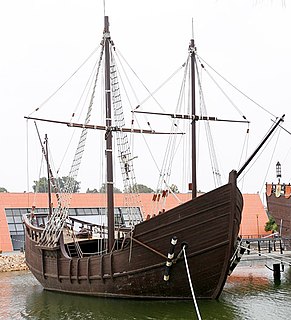 W
WLa Pinta was the fastest of the three ships used by Christopher Columbus in his first transatlantic voyage in 1492. The New World was first sighted by Rodrigo de Triana aboard La Pinta on 12 October 1492. The owner of La Pinta was Cristóbal Quintero. The Quintero brothers were ship owners from Palos. The owner of the ship allowed Martín Alonso Pinzón to take over the ship so he could keep an eye on the ship.
 W
WMartín Alonso Pinzón, was a Spanish mariner, shipbuilder, navigator and explorer, oldest of the Pinzón brothers. He sailed with Christopher Columbus on his first voyage to the New World in 1492, as captain of the Pinta. His youngest brother Vicente Yáñez Pinzón was captain of the Niña, and the middle brother Francisco Martín Pinzón was maestre of the Pinta.
 W
WVicente Yáñez Pinzón was a Spanish navigator, explorer, and conquistador, the youngest of the Pinzón brothers. Along with his older brother, Martín Alonso Pinzón, who captained the Pinta, he sailed with Christopher Columbus on the first voyage to the New World, in 1492, as captain of the Niña.
 W
WThe era of piracy in the Caribbean began in the 1500s and phased out in the 1830s after the navies of the nations of Western Europe and North America with colonies in the Caribbean began combating pirates. The period during which pirates were most successful was from the 1660s to 1730s. Piracy flourished in the Caribbean because of the existence of pirate seaports such as Port Royal in Jamaica, Tortuga in Haiti, and Nassau in the Bahamas. Piracy in the Caribbean was part of a larger historical phenomenon of piracy, as it existed close to major trade and exploration routes in nearly all the five oceans.
 W
WCamilo García de Polavieja y del Castillo-Negrete, 1st Marquis of Polavieja (1838–1914) was a Spanish general born in Madrid on July 13, 1838, in a family of merchants. He was an able commander, but considered as brutal as Valeriano Weyler of Cuba.
Juan Ponce de León II was the first acting governor of Puerto Rico to be born on the island.
 W
WJuan Ponce de León, commonly known as Ponce de León, was a Spanish explorer and conquistador known for leading the first official European expedition to Florida and serving as the first governor of Puerto Rico. He was born in Santervás de Campos, Valladolid, Spain in 1474. Though little is known about his family, he was of noble birth and served in the Spanish military from a young age. He first came to the Americas as a "gentleman volunteer" with Christopher Columbus's second expedition in 1493.
 W
WPuerto Rico, officially the Commonwealth of Puerto Rico and from 1898 to 1932 also called Porto Rico in English, is an unincorporated territory of the United States located in the northeast Caribbean Sea, approximately 1,000 miles (1,600 km) southeast of Miami, Florida.
 W
WThe Royal Decree of Graces of 1815 is a legal order approved by the Spanish Crown in the early half of the 19th century to encourage Spaniards and, later, Europeans of non-Spanish origin, to settle in and populate the colony of Puerto Rico.
 W
WLa Santa María, alternatively La Gallega, was the largest of the three ships used by Christopher Columbus in his first voyage across the Atlantic Ocean in 1492, the others being the Niña and the Pinta. Her master and owner was Juan de la Cosa, a man from Santoña, Cantabria, operating in south Spanish waters. Requisitioned by order of Queen Isabella and by contract with Christopher Columbus, whom de la Cosa knew previously, the Santa Maria became Columbus' flagship on the voyage as long as it was afloat. Having gone aground on Christmas Day, 1492, on the shores of Haiti, through inexperience of the helmsman, it was partially dismantled to obtain timbers for Fort Navidad, "Christmas Fort," placed in a native Taíno village. The fort was the first Spanish settlement in the New World, which Columbus had claimed for Spain. He thus regarded the wreck as providential. The hull remained where it was, the subject of much modern wreck-hunting without successful conclusion.
 W
WSanto Domingo, once known as Santo Domingo de Guzmán, is the capital and largest city of the Dominican Republic and the largest metropolitan area in the Caribbean by population. As of 2010, the city had a total population of 2,908,607, when including the metropolitan area. The city is coterminous with the boundaries of the Distrito Nacional, itself bordered on three sides by Santo Domingo Province.
 W
WA Short Account of the Destruction of the Indies is an account written by the Spanish Dominican friar Bartolomé de las Casas in 1542 about the mistreatment of and atrocities committed against the indigenous peoples of the Americas in colonial times and sent to then Prince Philip II of Spain.
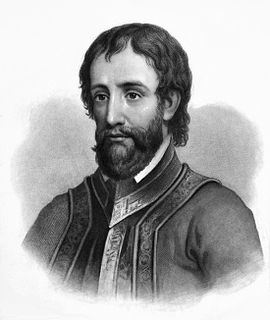 W
WHernando de Soto was a Spanish explorer and conquistador who was involved in expeditions in Nicaragua and the Yucatan Peninsula, and played an important role in Pizarro's conquest of the Inca Empire in Peru, but is best known for leading the first European expedition deep into the territory of the modern-day United States. He is the first European documented as having crossed the Mississippi River.
 W
WDuring the Spanish colonization of the Americas, the Spanish Main was the collective term for the parts of the Spanish Empire that were on the mainland of the Americas and had coastlines on the Caribbean Sea or Gulf of Mexico. The term was used to distinguish those regions from the numerous islands Spain controlled in the Caribbean, which were known as the Spanish West Indies.
 W
WSpanish Missions in Trinidad were established as part of the Spanish colonisation of its new possessions. In 1687 the Catholic Catalan Capuchin friars were given responsibility for religious conversions of the indigenous Amerindian residents of Trinidad and the Guianas. In 1713 the missions were handed over to the secular clergy. Due to shortages of missionaries, although the missions were established they often went without Christian instruction for long periods of time.
 W
WIn 1861, Dominican general Pedro Santana suggested retaking control of the Dominican Republic to Queen Isabella II of Spain, after a period of 17 years of Dominican sovereignty. The newly independent Dominican Republic was recovering economically from the recently ended Dominican War of Independence (1844–1856), when the Republic won its independence against Haiti. The Spanish Crown and authorities, which scorned and rejected the peace treaties signed after the dismantling of some of its colonies in the Spanish West Indies some 50 years prior, welcomed his proposal and set to reestablish the colony.
 W
WThe Spanish–American War was an armed conflict between Spain and the United States in 1898. Hostilities began in the aftermath of the internal explosion of USS Maine in Havana Harbor in Cuba, leading to U.S. intervention in the Cuban War of Independence. The war led to the U.S. emerging as predominant in the Caribbean region, and resulted in U.S. acquisition of Spain's Pacific possessions. That led to U.S. involvement in the Philippine Revolution and ultimately to the Philippine–American War.
 W
WThe Taíno are an indigenous people of the Caribbean. At the time of European contact in the late fifteenth century, they were the principal inhabitants of most of Cuba, Hispaniola, Jamaica, Puerto Rico, The Bahamas and the northern Lesser Antilles. The Taíno were the first New World peoples to be encountered by Christopher Columbus during his 1492 voyage. They spoke the Taíno language, an Arawakan language.
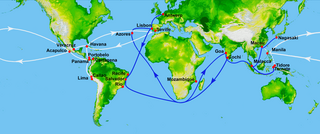 W
WThe Spanish treasure fleet, or West Indies Fleet Spanish: Flota de Indias, was a convoy system of sea routes organized by the Spanish Empire from 1566 to 1790, which linked Spain with its territories in the Americas across the Atlantic. The convoys were general purpose cargo fleets used for transporting a wide variety of items, including agricultural goods, lumber, various metal resources such as silver and gold, gems, pearls, spices, sugar, tobacco, silk, and other exotic goods from the overseas territories of the Spanish Empire to the Spanish mainland. Spanish goods such as oil, wine, textiles, books and tools were transported in the opposite direction. The West Indies fleet was the first permanent transatlantic trade route in history. Similarly, the Manila galleons were the first permanent trade route across the Pacific. The Spanish West and East Indies fleets must be counted as among the most successful naval operations in history and from a commercial point of view made possible many key components of today's global economic system.
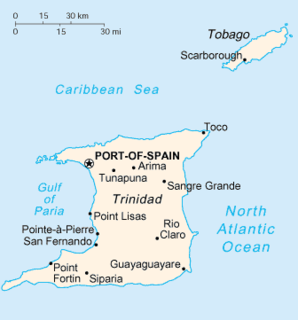 W
WTrinidad is the larger and more populous of the two major islands of Trinidad and Tobago. The island lies 11 km (6.8 mi) off the northeastern coast of Venezuela and sits on the continental shelf of South America. It is often referred to as the southernmost island in the Caribbean. With an area of 5,131 km2 (1,981 sq mi), it is also the fifth largest in the West Indies.
 W
WDiego Velázquez de Cuéllar was a Spanish conquistador. He conquered and governed Cuba on behalf of Spain and moved Havana from the south coast of western Cuba to the north coast, placing it well as a port for Spanish trade.